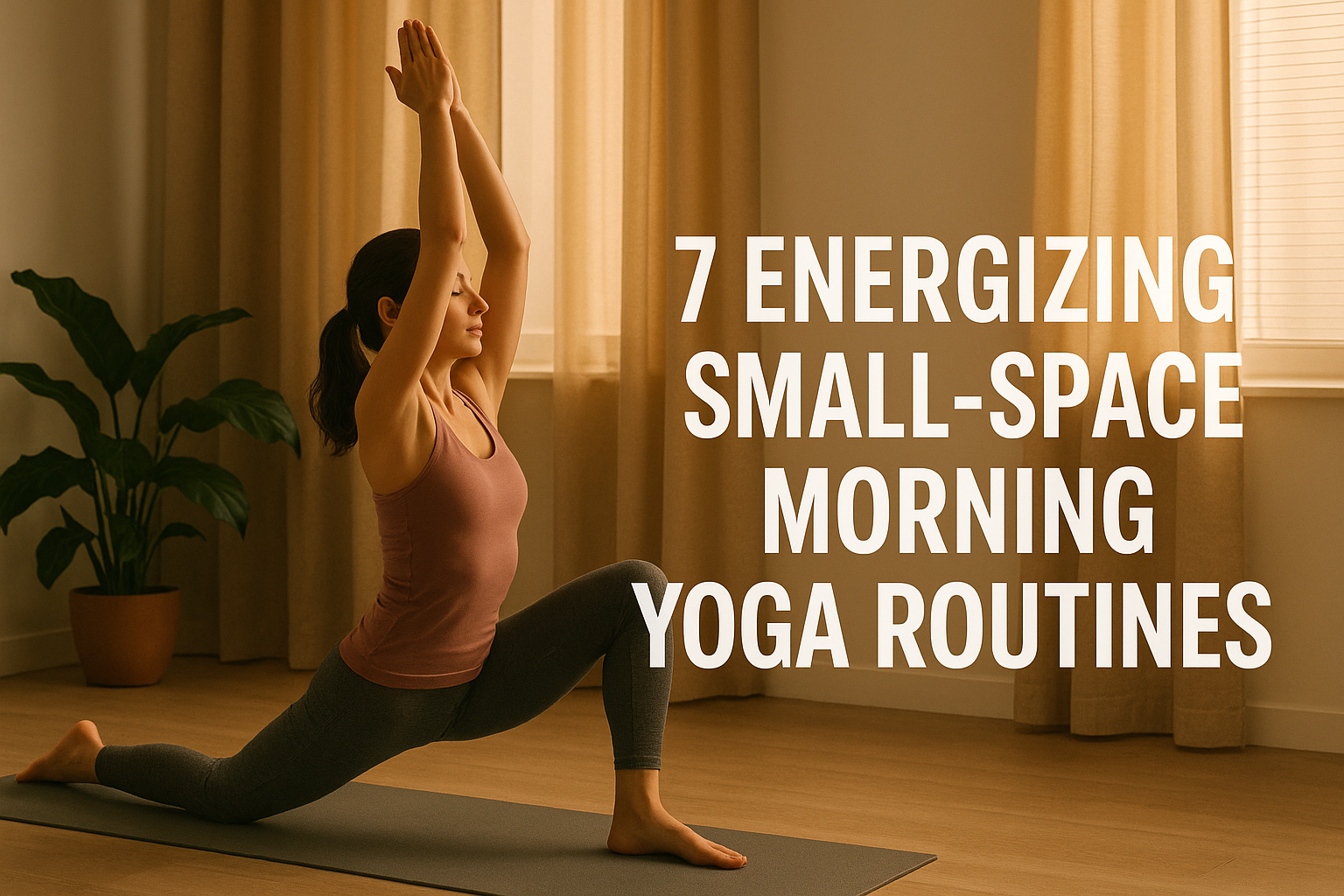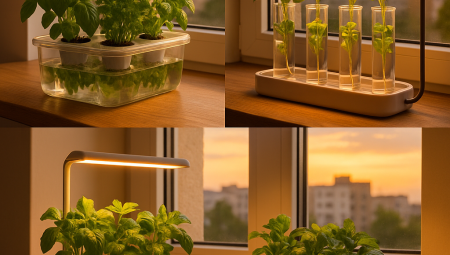Are you looking for a way to start your day with energy and calm, even if your living space is limited? Many people believe you need a dedicated yoga studio or ample room to practice, but that’s simply not true. A small-space morning yoga routine can be incredibly effective for improving your physical and mental well-being, all without needing more than a few feet of clear floor.
This comprehensive guide is designed for busy individuals, apartment dwellers, travelers, and anyone seeking to incorporate the profound benefits of yoga into their daily life, regardless of their living situation. We’ll explore routines specifically tailored for confined areas, ensuring you get a full, rejuvenating practice from the comfort of your home. By the end of this article, you’ll have all the tools and inspiration you need to transform your mornings and supercharge your day.
Why a Small-Space Morning Yoga Routine is Your Secret Weapon for 2025
The start of your day sets the tone for everything that follows. In 2025, with increasing demands on our time and often shrinking living spaces, finding moments for self-care is more crucial than ever. A small-space morning yoga routine offers a unique solution, providing a powerful blend of physical movement, mental clarity, and stress reduction without requiring a large commitment of space or time.
The Power of Starting Your Day Right
Studies show that individuals who engage in a morning routine, especially one involving physical activity, report higher levels of productivity, lower stress, and improved mood throughout the day. Yoga, with its emphasis on breathwork (pranayama), mindful movement (asanas), and meditation, is particularly effective. It not only wakes up your body but also focuses your mind, preparing you for the challenges ahead.
Overcoming the Space Challenge: Is Small-Space Yoga Even Possible?
Absolutely! The beauty of yoga is its adaptability. While grand studios and sprawling mats might seem ideal, the core principles of yoga – alignment, breath, and focus – can be practiced effectively in surprisingly compact areas. From a cozy studio apartment to a tiny hotel room, a small-space morning yoga routine is not just possible; it’s a game-changer for those who thought yoga wasn’t accessible to them. This approach prioritizes intentional movement and breath over elaborate sequences that demand a lot of room.
Crafting Your Perfect Small-Space Morning Yoga Routine
The key to a successful small-space morning yoga routine is intelligent sequencing and choosing poses that don’t require extensive lateral movement or large stretches. Below, we’ll break down a sample routine, along with variations and tips for maximizing your limited area.
Essential Elements of an Effective Small-Space Morning Routine
When designing your routine, consider these core components:
- Warm-up: Gentle movements to prepare your muscles and joints.
- Standing Poses (Modified): Stable poses that build strength and balance, adapted for small areas.
- Seated Poses: Excellent for hip opening, stretching, and calming the mind.
- Floor Poses: Deep stretches and relaxation.
- Breathwork (Pranayama): Focus on breath to energize or calm.
- Meditation/Savasana: A crucial period for integration and relaxation.
Your Go-To Small-Space Morning Yoga Flow
This routine is designed to be completed in 15-30 minutes, depending on how long you hold each pose.
1. Gentle Wake-Up (5 minutes)
- Cat-Cow (Marjaryasana-Bitilasana): Start on all fours. Inhale as you drop your belly and lift your gaze, exhale as you round your spine and tuck your chin. This warms up the spine and connects breath to movement. Modification for very small spaces: If on a bed, simply do a seated cat-cow.
- Child’s Pose (Balasana): Kneel, bring your big toes to touch, and widen your knees. Fold forward, resting your torso between your thighs. Extend arms forward or back. A grounding pose that gently stretches the back and hips.
- Seated Side Bend: Sit comfortably, perhaps cross-legged. Inhale, raise one arm overhead, exhale as you gently bend to the opposite side. Stretches the intercostal muscles and sides of the torso.
2. Standing Power (5-10 minutes)
- Mountain Pose (Tadasana) with Arm Raises: Stand tall, feet hip-width apart. Inhale, sweep your arms overhead, exhale, bring them down. Focus on alignment and breath. This pose is foundational and requires minimal space.
- Chair Pose (Utkatasana): Imagine sitting in a chair, weight in your heels, arms extended. Builds leg strength. Small-space adaptation: Ensure your arms are not hitting walls. You can bring hands to heart center.
- Standing Forward Fold (Uttanasana): From Mountain Pose, hinge at your hips and fold forward, letting your head hang. Stretches hamstrings and spine. Modification: Keep a slight bend in knees.
- Half Sun Salutation: A condensed version of Surya Namaskar. Start in Mountain Pose, inhale arms up, exhale forward fold, inhale half-lift, exhale forward fold, inhale return to Mountain Pose. Repeat 3-5 times. This creates warmth and flow.
3. Floor-Based Deep Stretches (5-10 minutes)
- Seated Forward Fold (Paschimottanasana): Sit with legs extended. Inhale, lengthen spine, exhale, fold over legs. Stretches hamstrings and back.
- Reclined Spinal Twist (Supta Matsyendrasana): Lie on your back, hug knees to chest. Drop knees to one side, extending arms to a “T”. Gently twists the spine and releases tension. Small-space tip: Ensure there’s enough room for your arms to extend, even if bent.
- Happy Baby Pose (Ananda Balasana): Lie on your back, hug knees to chest, grab the outside edges of your feet. Gently rock side to side. Opens hips and stretches inner thighs.
4. Breathwork & Relaxation (5 minutes)
- Box Breathing (Sama Vritti): Inhale for 4 counts, hold for 4, exhale for 4, hold for 4. Repeat several times. Calms the nervous system and improves focus. Can be done seated or lying down.
- Savasana (Corpse Pose) with Visualization: Lie flat on your back, arms by your sides, palms up. Allow your body to relax completely. Close your eyes and visualize a peaceful scene, or simply focus on your breath. This final pose is crucial for integrating the benefits of your practice.
Featured Snippet Optimization: Can a Small Space Yoga Routine Really Make a Difference?
Yes, a small-space morning yoga routine can profoundly impact your day by improving physical flexibility, reducing stress, enhancing mental clarity, and boosting energy levels, all within the confines of a limited area. It offers a convenient and accessible way to integrate self-care into even the busiest schedules, proving that effective yoga practice isn’t dependent on a large studio but rather on consistent, mindful effort.
Pro Tips for Your Small-Space Morning Yoga Routine
- Utilize Your Wall: A wall can be an excellent prop for stability in standing poses like Downward Dog (legs up the wall) or for deeper stretches.
- Mini-Mats or Towels: If a full yoga mat is too large, use a smaller mat designed for travel, or simply a thick towel for cushioning.
- Focus on Intent, Not Perfection: Don’t get caught up in achieving perfect poses. The goal is to move your body, connect with your breath, and find what feels good for your body in your space.
- Incorporate Props Creatively: A cushion can elevate your hips in seated poses, and a belt or scarf can extend your reach for stretches.
- Consistency Over Duration: Even 10-15 minutes daily is more beneficial than an hour-long session once a week. Make it a non-negotiable part of your morning.
- Dress Comfortably: Wear clothing that allows for full range of motion without feeling restrictive.
Frequently Asked Questions About Small-Space Morning Yoga
1. What are the best yoga poses for very small spaces?
The best yoga poses for very small spaces are those that are primarily performed on your mat or while standing in a compact area. Excellent options include Cat-Cow, Child’s Pose, Mountain Pose with arm raises, Chair Pose, standing and seated forward folds, Reclined Spinal Twist, and Happy Baby. Poses that require minimal lateral movement or large arm/leg extensions are ideal.
2. How can I make my small space feel more conducive to yoga?
To make your small space feel more conducive to yoga, consider decluttering the immediate area you’ll be using. Good lighting (natural light is best), a comfortable temperature, and perhaps a calming scent from an essential oil diffuser can also enhance the atmosphere. Even a small plant can make a difference in creating a more serene environment.
3. Do I need any special equipment for small-space morning yoga?
No, you don’t need any special equipment to start a small-space morning yoga routine. A yoga mat is helpful for comfort and grip, but a towel or even a carpeted floor can suffice. As you progress, you might consider props like a yoga block (a thick book can substitute) or a strap (a belt or scarf works) to deepen stretches, but they are not essential for beginners.
4. How long should a small-space morning yoga routine be?
A small-space morning yoga routine can be as short as 10-15 minutes or as long as 30 minutes, depending on your schedule and energy levels. The most important factor is consistency. Even a few minutes of mindful movement and breathwork each morning can yield significant benefits over time.
5. Can beginners do small-space morning yoga?
Absolutely! Small-space morning yoga is an excellent starting point for beginners. It allows you to learn foundational poses and establish a consistent practice without the intimidation of a large studio setting or the need for extensive knowledge of complex sequences. Focus on listening to your body and moving with your breath.
Conclusion: Embrace Your Small Space, Embrace Your Yoga Practice
Don’t let the size of your living area dictate your ability to cultivate a fulfilling yoga practice. A small-space morning yoga routine is not just a compromise; it’s a powerful, accessible tool for self-care, focus, and energy in 2025 and beyond. By incorporating these adaptable routines and expert tips, you can transform your mornings, improve your well-being, and carry that positive energy into every aspect of your day. The only space you truly need is the space within yourself to begin.
What are your biggest challenges when trying to maintain a morning routine in a small living space? Share your thoughts and tips in the comments below!



